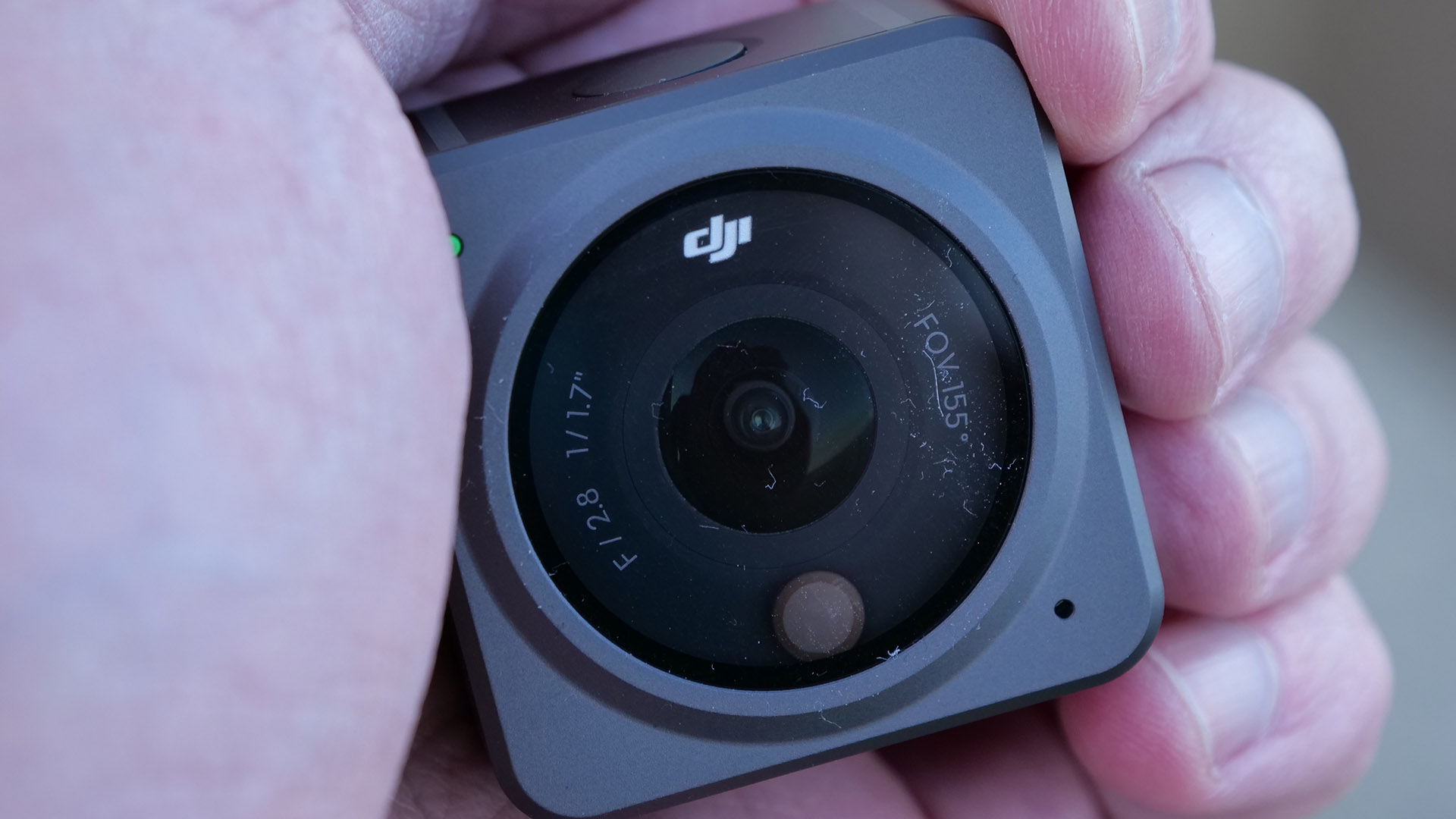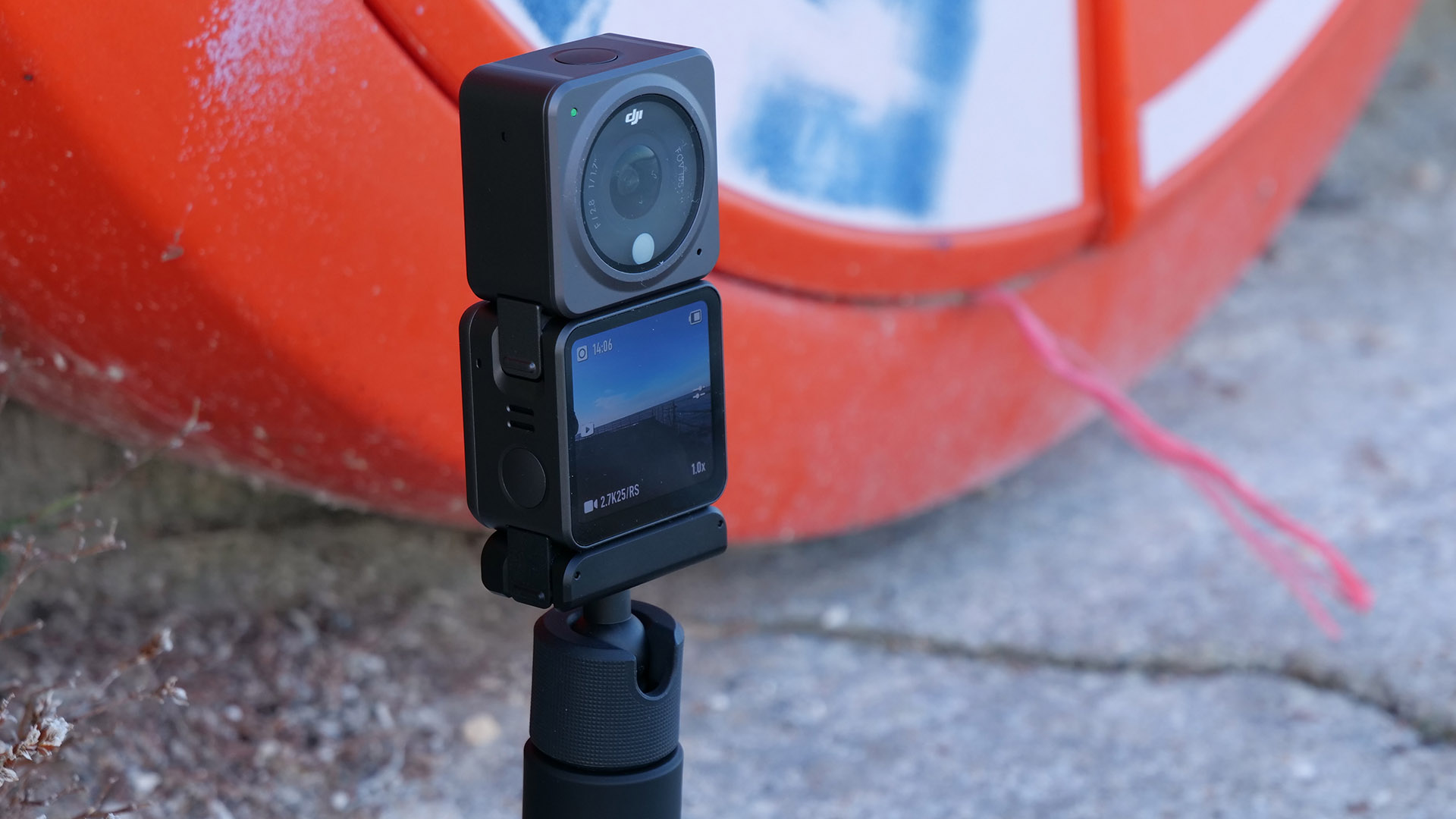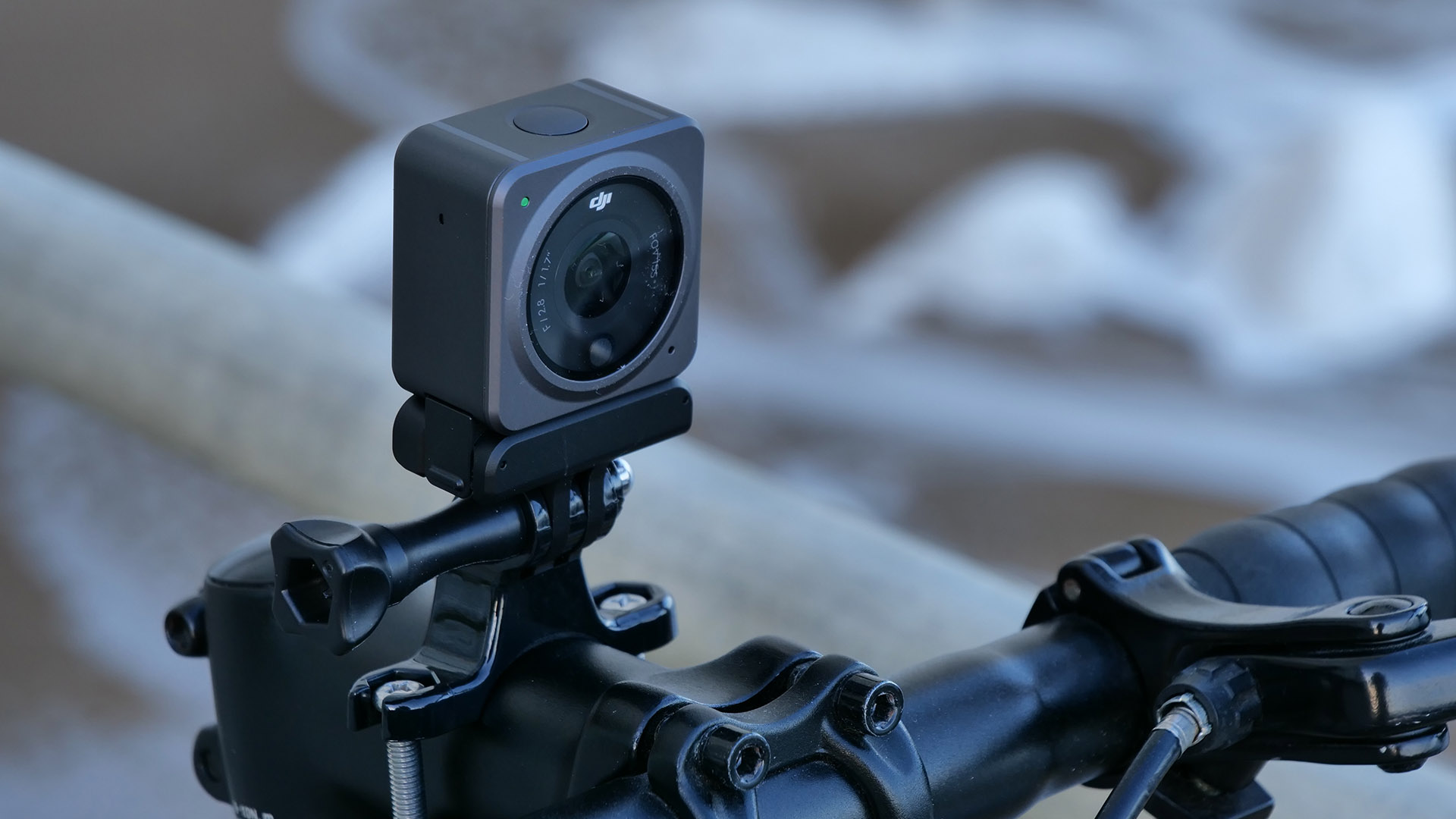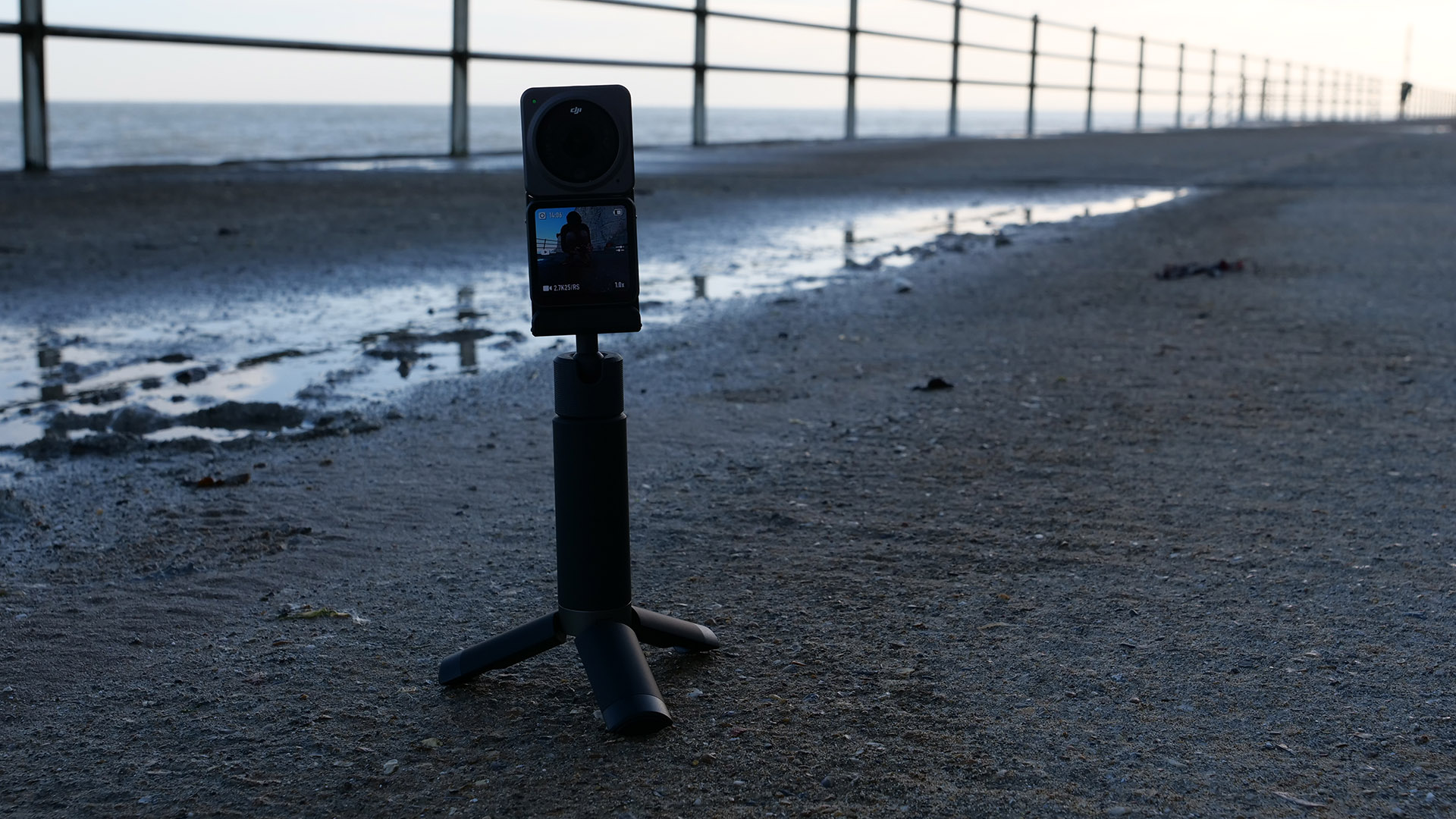DJI Action 2 review: an innovative and stylish GoPro alternative
The dinky DJI Action 2 takes the fight to GoPro with clever magnetic accessories and impressive performance, but it's not without its problems. Here's our review

The DJI Action 2's best qualities are its tiny size, its clever magnetic mounting and mod system and its solid electronic image stabilisation. It does have some weaknesses, chiefly its tendency to overheat, but provided you can live with what that entails (shorter hi-res video clips than you might like) you'll find this to be a solid and sturdy action cam capable of great things.
-
+
Small and lightweight
-
+
Flexible magnetic modular system
-
+
Excellent electronic image stabilisation
-
+
Very wide field of view
-
-
Overheating curtails video clip length
-
-
Poor low light performance
Why you can trust T3

The DJI Action 2 is the next generation of action camera from the kings of the drone world, and it launched in November 2021. In a daring bid to prove that GoPro isn't the only game in town when it comes to action cams, DJI has given its Osmo Action camera a major reinvention. The first Action looked and felt very much like a tribute act to the GoPro Hero range, but the Action 2 goes its own way. First order of business: dropping the Osmo appellation. It's been pretty successful too – this cam is our current top pick for the best GoPro alternative.
A tiny main camera unit performs the bulk of imaging duties, but it's now fully modular. Extra battery power, storage and even a front-facing touchscreen can be added via clipping on magnetic modules, and the mounting system is magnetic too. The (admirable) idea is to reduce the time it takes to get the camera from one mod or mount to another, but does it come at a cost to performance? Can the brand behind almost all of today's best drones level up to compete amongst the best action cameras, too?
We put this dinky action camera through its paces to find out. Read on for our full DJI Action 2 review, or see how it compares to the action cam kings in our DJI Action 2 vs HERO 10 Black face-off.
DJI Action 2 review: design and setup
The DJI Action 2's main unit is compact and lightweight. This pocket-sized cube registers a mere 56g on the scales, which is fantastic news for anyone who wants to mount it on their head, chest or other body part; you'll definitely notice a worn Action 2 less than you would a worn GoPro Hero10 Black, which weighs in at a relatively hefty 158g.
The unit is a clean, minimalist block sturdily constructed from metal and Gorilla Glass. DJI makes few specific claims about its ruggedness aside from water resistance to a depth of 10m, but does call it dustproof and drop-proof. Disappointingly, the two main add-on modules at launch (the Power Module and the Front Touchscreen Module) are not waterproof; if you want to use one of these combined with the camera for underwater shooting, you'll need to buy DJI's £45 diving case. This can accommodate the camera and one docked module and is waterproof to 60m.

DJI Action 2 action camera with Front Touchscreen Module
As we said, the main unit takes a minimalist approach. There's a single physical button that controls both power and the camera shutter, while the rest of the controls and options are accessed on the small but bright and detailed rear touchscreen. There's no MicroSD slot to expand the 32GB of internal storage and it doesn't even have a USB connector for charging, meaning you'll need to magnetically dock it with either the Power Module or Front Touchscreen Module (both of which offer USB-C ports and MicroSD slots) to top up the battery or add extra storage space.
It's worth noting that the magnet system is backed up by a spring-loaded catch in most cases, which adds an extra measure of grip between modules or between a module and mount; you're not totally reliant on magnetic attraction to keep your camera in place, in other words.

At launch, the Action 2 is available in two bundles. The Power Combo (£349) comprises the main unit, the Power Module (which increases battery life to a total of 180 minutes and adds a MicroSD card slot), a magnetic lanyard and a short USB-C cable for charging. The Dual Screen Combo (£455) offers the same but adds a magnetic ball-joint adapter (to fix the camera to tripods, selfie sticks or anything with a GoPro-style mount) and replaces the Power Module with a Front Touchscreen Module; this features an OLED touchscreen, MicroSD slot, four extra microphones and enough extra battery power for 160 minutes of recording in total.
Getting the unit up and running is simple: install the DJI Mimo app on your Android or iOS device, power on the camera and you'll be prompted to pair the two. Then you can change settings and stop/start recording using your smartphone as a remote control and viewfinder. Alternatively, you can swipe through menus on the rear screen of the camera, which is definitely fiddlier but suffices in a pinch.
- DJI Mic review: affordable wireless mics for all kinds of content creators
- DJI Pocket 2 review: class-leading stabilisation in an awesome vlogging camera
DJI Action 2 review: features and usability
The Action 2 offers pretty much everything you'd expect from an action cam but (the aforementioned magnetic mount / mod system aside) not much more; that's not a major criticism, by the way: getting the action cam basic rights is far more important than lavishing bells and whistles on the thing. The camera can record videos in a wide range of frame rates and resolutions as well as 12MP stills (more on those below) and slow motion, timelapse and hyperlapse sequences. It also has both Wi-Fi and Bluetooth connectivity and live streaming via Facebook and YouTube (you'll need to use your smartphone to set this up).
In terms of usability, the Mimo app performs well. It doesn't feel overburdened with pointless options and menu screens, and the UI is straightforward enough that anybody the slightest bit familiar with smartphone cameras should be able to quickly get to grips with it. DJI also includes a suite of editing and sharing tools, as you'd expect, and while these don't exactly set the heart racing there's nothing particularly wrong with them. Editing videos on a smartphone has never been much fun, but Mimo does at least keep it simple.
DJI Action 2 review: video and stills
The Action 2 doesn't match the 23MP photos and 5.3K video resolution of the GoPro Hero10 Black, instead delivering stills at up to 12MP and videos in either 4K, 2.7K or 1080p resolution. That said, it still resolves a lot of detail for such a small camera, and the footage and photos it turns out are easy on the eye: colours look natural and there's a nice contrast punch.
One area where it does have the GoPro beaten is field of view. With electronic image stabilisation turned off, the Action 2 offers an ultra-wide 155º FOV, allowing it to cram more in the frame than the Hero10 Black (which offers a maximum FOV of 132º). That's not to be sniffed at if you want to ensure your action cam captures as much of the action as possible.

It's worth noting that switching on DJI's RockSteady image stabilisation will result in a small crop, while using the even more effective HorizonSteady will slice yet more out of the frame. On the other hand, these stabilisation modes do work excellently in general, removing judder and shake and, in HorizonSteady's case, keeping everything beautifully levelled no matter how wobbly your bike/boat/surfboard/legs. Their availability depends on the frame rate and resolution you use, however: HorizonSteady can't be used on anything above 2.7K/60fps.
The biggest issues with image quality are that it's not great in low light (images become grainy and indistinct in gloomy conditions, something that's also the case with even the latest GoPros) and that long video recordings, particularly at 2.7K and 4K resolution, can overheat the camera unit, causing it to curtail your clip length. This latter problem is one we'd like to see addressed quickly in a firmware update as, while it never majorly impacted our own use of the Action 2, it would affect anybody wanting to document anything over about 10 minutes. In warmer environments, we'd expect the clip length to drop even further – and do note that, after a shutdown, you may not be able to start a new recording until the camera has spent several minutes cooling off.
DJI Action 2 review: specs
Weight: 56g
Dimensions: 39 x 39 x 22.3mm
Video: 4K/120fps, 1080p/240fps
Photo: 12MP/4000 x 3000
ISO range: 100-6400
FOV: 155º
Aperture: f/2.8
Connectivity: 2.4/5GHz Wi-Fi and Bluetooth 5.0
App: DJI Mimo
Battery: 580mAh
Timelapse: Up to 5 hours, 0.5-40 second intervals
Hyperlapse: Up to 30x
Slow motion: Up to 8x
Touchscreen: 1.76in
Waterproofing: 10m without case
GPS: No
Stabilisation: RockSteady 2.0/HorizonSteady
Built-in storage: 32GB (22.4GB usable)
Live streaming: Yes (via app)
DJI Action 2 review: verdict
While we love the DJI Action 2's compact build, clever modular magnet system and smooth electronic image stabilisation, we would struggle to recommend it to someone already heavily invested in the GoPro system. The Action 2's performance is solid enough, but there's nothing here that outdoes the HERO 10 Black in terms of image quality – and the overheating issues are too big to ignore.
That said, anyone taking their first steps into the action camera market would do well to give DJI's upstart offering some consideration. Not only is it small and light enough to be worn without getting in your way, the Action 2's ultra-wide field of view captures a huge swathe of action in front of it. With battery life being decent (and easily expandable, along with storage, by attaching one of the modules) and image stabilisation being as good as anything we've seen from GoPro, it makes for a very solid everyday action and vlogging camera – as long as you don't need to record clips longer than a few minutes.
Sign up to the T3 newsletter for smarter living straight to your inbox
Get all the latest news, reviews, deals and buying guides on gorgeous tech, home and active products from the T3 experts
Sam has been covering tech and culture for more than two decades, first in games journalism and later consumer electronics, streaming entertainment and photography. He has written for the likes of Wired, Stuff, CNET, GQ, Trusted Reviews and CVG, and now lives on the Kent coast – not a bad spot for a camera reviewer to reside.
-
 Polar’s new subscription feature lands in the shadow of Garmin’s Connect+ rollout
Polar’s new subscription feature lands in the shadow of Garmin’s Connect+ rolloutPR genius or timing disaster? Polar’s new Fitness Programme adds adaptive training to its ecosystem
By Matt Kollat Published
-
 New Orient Star watches offer a glimpse of the magic within
New Orient Star watches offer a glimpse of the magic withinThere are two new skeleton pieces
By Sam Cross Published
-
 Netflix's most surprising 100%-rated sci-fi series returns with gorgeous trailer
Netflix's most surprising 100%-rated sci-fi series returns with gorgeous trailerLove Death + Robots is back for more
By Max Freeman-Mills Published